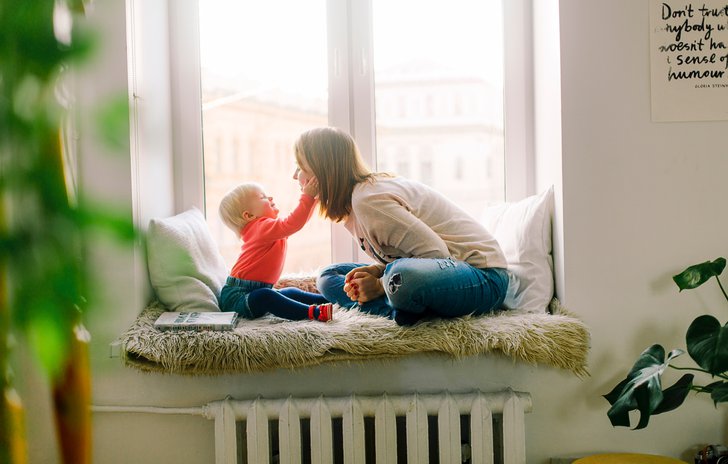These tips will help your child learn and bond with you if they’re visually impaired. A child with visual impairments uses other senses to help them to learn. Communicating is a big part of this.
A child with vision can see a man banging on a drum, hear the sound and link the two. This is called the cause-effect. A child with visual impairments can hear the sound but needs help to learn what made the sound. Communicating and talking builds up their understanding of this cause-effect.
Learning with the senses
Children with visual impairments are more sensitive to sound, touch, taste and smell. They might not respond to you as quickly as a sighted child would, but they are just as keen to learn!
Your voice is a powerful tool. Your child will be aware of the different tones you use which give meaning. Try to use your voice to convey emotion and keep it calm and gentle.
Getting down to your child’s level will help them know where you are. Introduce yourself when you come into a room and let them know when you are leaving so they know who is near them.
Children with visual impairments learn lots through using their hands and touch. Let them touch your face and name the parts of the face. This helps them learn about the body. Placing your child’s hand on your face so it is near your nose and lips will help give a sense of what happens when someone talks.
Tips for chatting to your child
- Explain sounds, noises and smells. Remember your child won’t have seen what caused the noise.
- Use ‘coactive’ movements. This means placing your hand on your child’s while he is doing a movement and talk through what you are doing. For example, when they are having a drink, guide their actions and tell them they are having a drink.
- Children with visual impairments will be much more alert to resonance, like drums or beach balls because they will feel the vibration.
- At mealtimes, explain the textures, smells and tastes of foods. This helps give your child a sense of what they will be eating without being able to see it.
- Let your child start conversations.
- Encourage your baby to look at you when they are talking. This might not come naturally to them, but it helps to develop social skills.
- Encourage your child to smile. By telling them how nice it is, you help their social skills and let them know how to share their mood.
- Copying your baby’s noises encourages them to start speaking.
Other resources
- Living Paintings has a free postal library of Touch to See books, these books provide access to the visual world for blind and partially sighted children and adults.
- Clearvision Project is a UK postal lending library of mainstream children's books with added braille.
- CustomEyes Books don’t believe a vision impairment should stop you, or your child, from knowing the joy of reading. That’s why CustomEyes Books in large print give them the chance to read a real book, just like everybody else.




